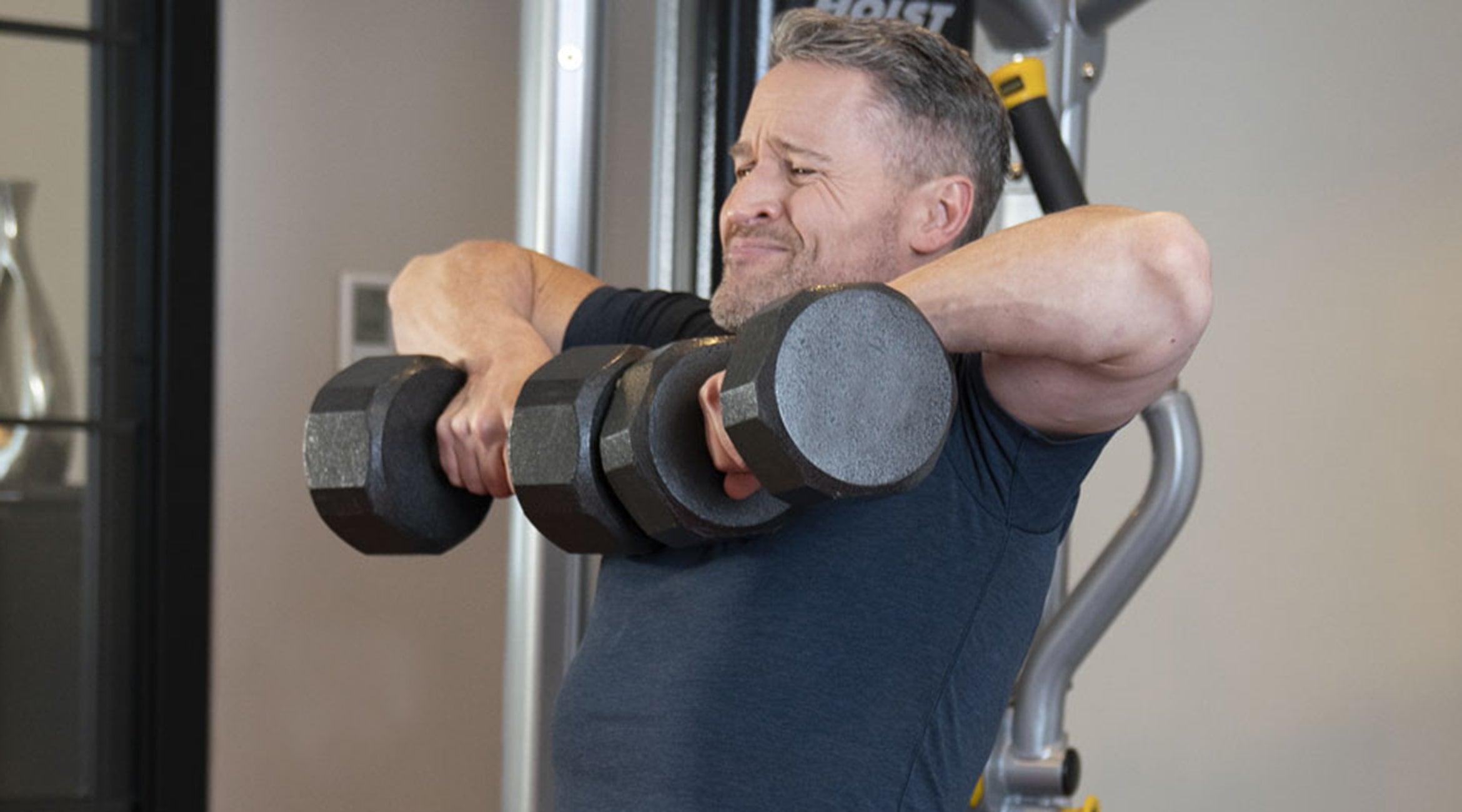Staying idle while trying to recover can be a significant challenge for many active individuals, who may be tempted to continue working through the pain and hoping it goes away. But that can make injuries even worse and ultimately force a hiatus.
When pain is ongoing, it’s best to consult with a healthcare professional for proper diagnosis and treatment. However, finding out what exercise and activities you can still do while tending to your injury can provide valuable physical and mental benefits.
Take tennis elbow, for instance. Not just limited to people who play racquet sports, this common injury can strike anyone who performs repetitive movements with their arms, including fitness enthusiasts, bikers, gamers, computer users, DIY-ers, crafters and more.
Tennis elbow comes from overuse of the wrist and arm, which eventually causes microscopic tears in the forearm tendon, leading to pain and degeneration. In its early stages, discomfort is typically mild and intermittent, but gradually becomes more intense and frequent.
Exercisers with tennis elbow are challenged to limit aggravation and avoid worsening the injury. While focusing exclusively on the lower body and core is likely the safest approach, this isn’t always realistic if treatment extends over several months. Plus, exercise increases overall circulation, which is important to help promote healing in the forearm tendon.
While it is possible to exercise with tennis elbow, you should discuss the safest options with your physician or physical therapist, particularly when you’re wondering, “What upper-body exercises can I do with tennis elbow?”
Recommended Exercises to Treat Tennis Elbow
One common treatment for tennis elbow is specific strengthening and stretching exercises for the forearms to help increase range of motion and promote endurance, which improves resistance to repetitive stress. Exercises can be done at home, 4-7 times per week, for 6-12 weeks, or as prescribed.These typically include wrist extension and flexion, radial and ulnar deviation, forearm pronation and supination, ball squeeze and finger stretch. For specific instructions, check out the recommendations from physical therapists at Stā Active.
Upper-Body Exercises to Avoid
Because the elbow is involved in many upper-body exercises, unfortunately there are a number of them that aren’t recommended when you’re suffering from tennis elbow. Some apply too much pressure or cannot be suitably modified, which thereby can exacerbate the injury.- Upper-body exercises to avoid:
- Pull-ups and chin-ups
- Full push-ups (try modified or incline)
- Dips
- Upright rows
- Reverse biceps curls
- Lateral and front raises
- Kettlebell swings or suspension training movements
Keep in mind that temporarily skipping these exercises will help you heal.
Performing Upper-Body Exercises with Tennis Elbow
While the list above may seem to include several of your favorite exercises, you still have a lot of other options to work your upper body. Remember that the goal when you are injured is to try to maintain fitness and muscular endurance, rather than increasing strength. Lifting heavy or pushing yourself hard when you have tennis elbow usually results in more pain than gain.Therefore, take the following approach to upper-body training while you have tennis elbow:
- Warm up first. Massage the elbow gently and perform some simple, unweighted range of motion and dynamic flexibility exercises before lifting weights.
- Go lighter. Use lighter weights or no weight at all, with fewer sets.
- Use dumbbells or resistance bands. Some experts recommend skipping barbells because they let you favor your stronger side, which promotes muscle imbalances.
- Maintain proper form. Perform exercises slowly – possibly with a shorter range of motion – engaging the core to reduce strain on the elbow and wrist. Keep the wrists straight/neutral, and don’t lock the elbows.
- Ease your grip. Don’t clench your fists tightly; instead, try to relax your grip to decrease stress on the wrist and forearm. You may even do a couple of quick forearm stretches between sets.
- Add support if necessary. Using kinesio tape or wearing wrist wraps or a forearm or elbow strap gives extra support to the area. Avoid large braces that totally immobilize the elbow (for obvious reasons).
- Stop if you’re in pain. This isn’t a sign of weakness, so ditch your pride. This ultimately may be the best thing to prevent additional aggravation and a potential longer period out of commission.
If you experience more pain or a significant change in symptoms after performing upper-body exercises, consult with your health care professional before resuming your routine. Healing and restoring full function to the elbow requires consistent treatment and patience.


Share:
How to Treat Tennis Elbow without Health Insurance
How Much Does Tennis Elbow Treatment Cost?